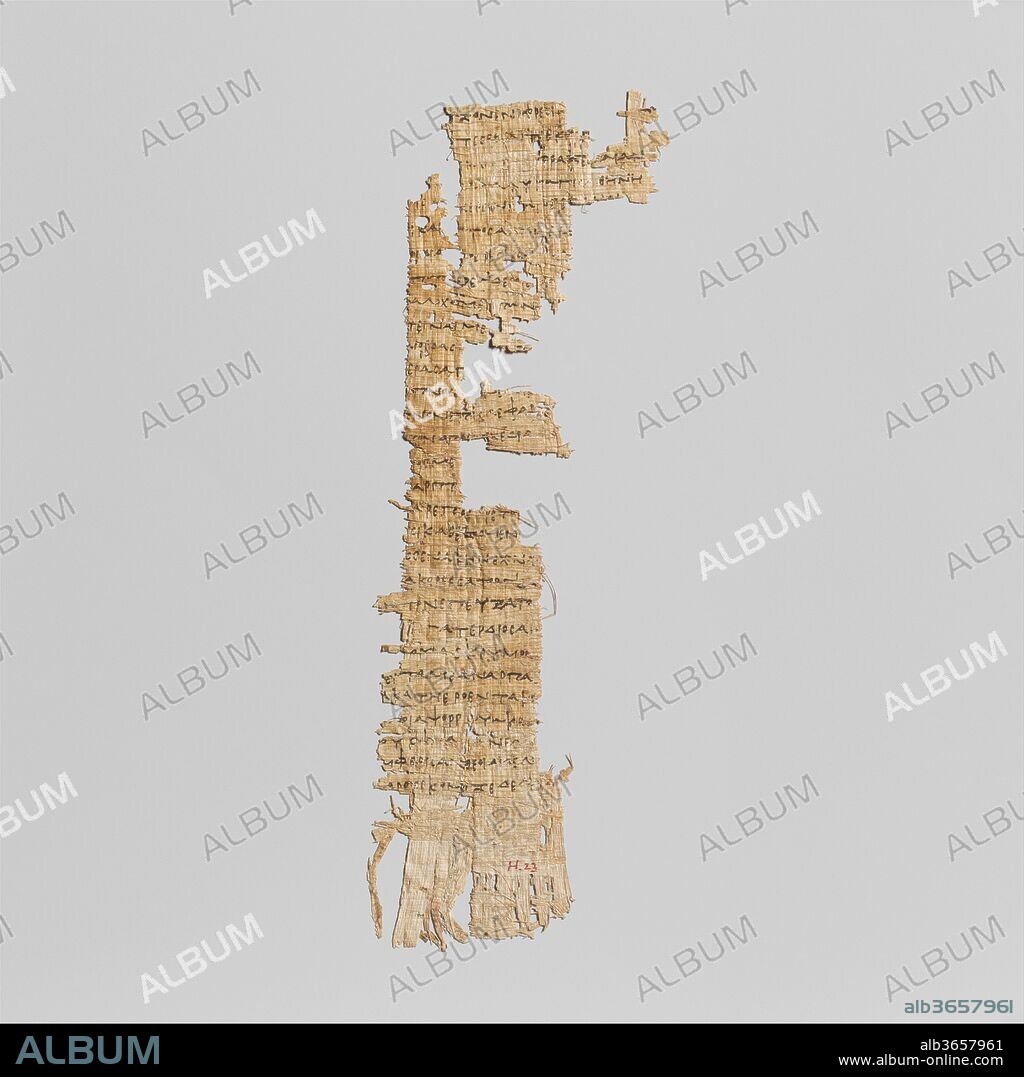alb3657961
Papyrus fragment with lines from Homer's Odyssey

|
Zu einem anderen Lightbox hinzufügen |
|
Zu einem anderen Lightbox hinzufügen |



Haben Sie bereits ein Konto? Anmelden
Sie haben kein Konto? Registrieren
Dieses Bild kaufen

Titel:
Papyrus fragment with lines from Homer's Odyssey
Untertitel:
Siehe automatische Übersetzung
Papyrus fragment with lines from Homer's Odyssey. Culture: Greek, Ptolemaic. Dimensions: 7 1/2 in. (19.1 cm). Date: ca. 285-250 B.C..
For the ancient Greeks, papyrus, a paper made from the stalks of the papyrus plant, was the preferred material on which to record permanent writings, such as a marriage contract or, as here, a book. Writing on papyrus was done with a stylus, such as a sharpened reed with a split point or a bronze pen with nib, and ink, usually made of lampblack in water.
This is the first early Ptolemaic fragment of the Odyssey ever discovered. It contains three lines from Book 20 that do not occur in the standard text preserved today and is a physical testimony to the fact that local variations of this famous work existed in the third century B.C.
The most important repository of Homeric texts in the Hellenistic world was at the library of Alexandria, Egypt, the first comprehensive public library ever built, which was founded by the Ptolemaic kings in the early third century B.C. As Homer was the poet par excellence, his work was central to the library's collections, which contained copies of the Homeric poems from many different city-states, including Chios, Argos, and Sinope. One of the first endeavors of the Alexandrian scholars was to establish a standard text for these most cherished works of Greek literature.
Technik/Material:
PAPYRUS
Zeitraum:
Early Hellenistic
Museum:
Metropolitan Museum of Art, New York, USA
Bildnachweis:
Album / Metropolitan Museum of Art, NY
Freigaben (Releases):
Model: Nein - Eigentum: Nein
Rechtefragen?
Rechtefragen?
Bildgröße:
3981 x 3982 px | 45.4 MB
Druckgröße:
33.7 x 33.7 cm | 13.3 x 13.3 in (300 dpi)
Schlüsselwörter:
 Pinterest
Pinterest Twitter
Twitter Facebook
Facebook Link kopieren
Link kopieren Email
Email
